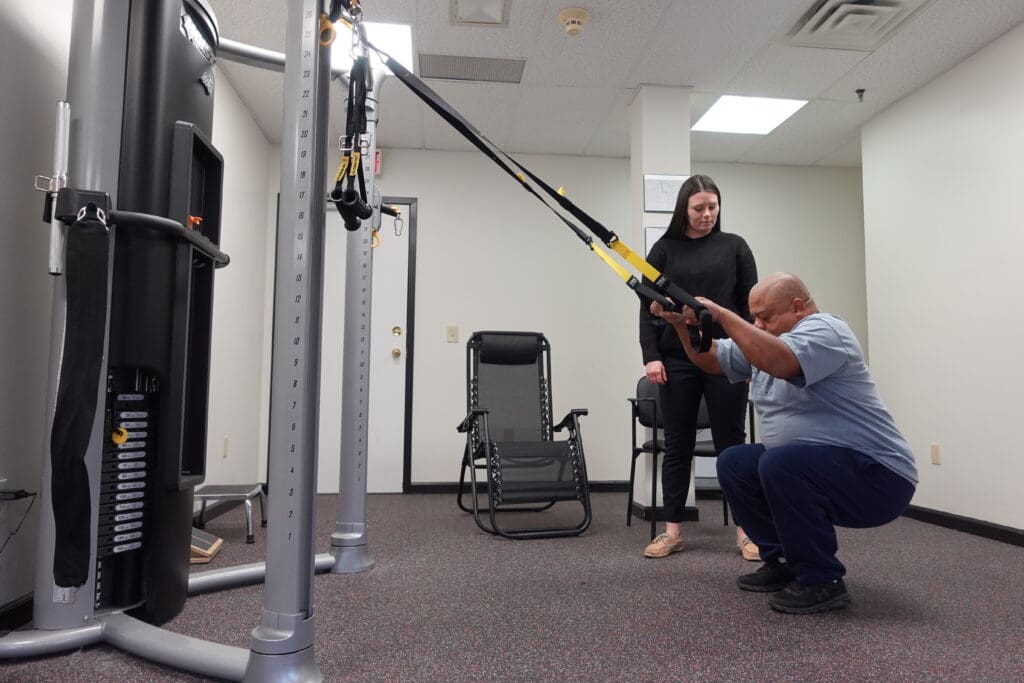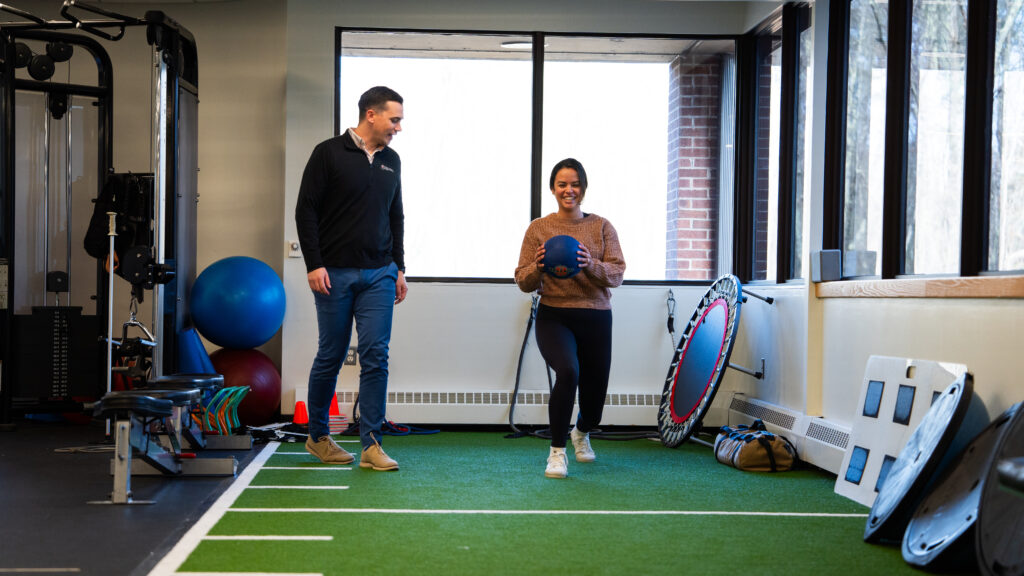Physical Therapy for Balance and Fall Prevention
The Centers for Disease Control and Prevention (CDC) estimates that more than 36 million older Americans fall each year.
Falls lead to a variety of injuries, complications, and expenses, including:
- Hospitalizations
- Emergency room visits
- Surgery
- Opioid use
Physical therapy can help to prevent and treat falls.
How Physical Therapy Can Help
There are many different factors that can increase an individual’s fall risk. Aging, sedentary lifestyle, and poor nutrition can lead to a decrease in muscular strength and endurance and bone density. There may also be underlying conditions that increase fall risk, such as chronic disease, cognitive deficits, vision issues, and postural hypotension.
Physical Fitness

According to one study, US adults spend about 70% of waking hours sitting and engage in little no exercise. Aging combined with a sedentary lifestyle increases fall risk as well as all-cause mortality (death from any cause).
We know we need to exercise, but the hardest part is taking that first step. It can especially be hard if you’re already experiencing movement and mobility issues that are limiting your ability to exercise or even walk.
Physical therapy can help individuals gain strength, endurance, mobility, and confidence in a safe environment. Physical therapists will evaluate patients and address any limitations so that patients can start moving pain free.
Gait Training
Physical therapists can also improve gait and balance with targeted exercises. Gait is the pattern that you walk. You might have never thought about it, but it’s extremely important when it comes to preventing falls! Small alterations, including gait speed, step length, and frequency of stride variability, can increase or decrease fall risk.
First, a physical therapist will assess your gait and look for any range of motion deficits that could be limiting your movement. Then, they will prescribe specific exercises to help improve gait and mobility drills to help improve range of motion. Examples of exercises used to improve gait are learning to walk properly with an assistive device and walking properly on uneven surfaces.
Balance Training

Balance is an individual’s ability to control their center of gravity within the limit of their base of support. This involves improving strength, dynamic trunk control, and proprioception. Physical therapy works on improving all three of these vital aspects of balance.
What is proprioception?
Proprioception is the sense of self-movement, force, and body position. It comes from sensory receptions in the nervous system and allows you to complete movements without consciously thinking about them. Examples of thing proprioception lets you do:
- Touch your nose with your eyes closed
- Walk without consciously thinking about each step
